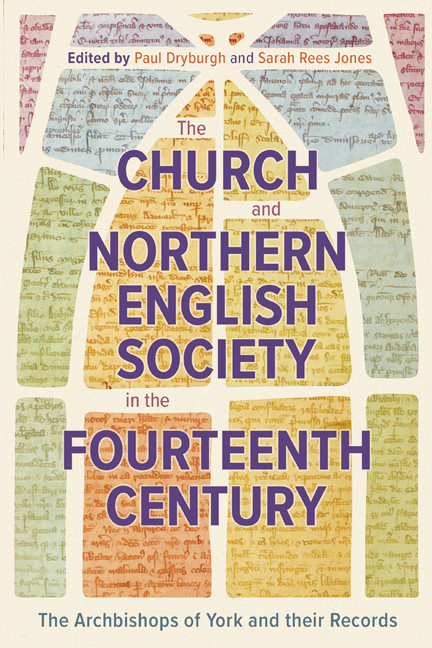 The Church and Northern English Society in the Fourteenth Century
The Church and Northern English Society in the Fourteenth Century Published online by Cambridge University Press: 17 May 2024
One Monday at the very end of the fourteenth century, John Green, the perpetual vicar of the prebendal church of Wistow, and John Keleby, the chaplain and parish clerk of the same church, were saying the verses of the day. Then Green stumbled over his words, Keleby laughed, and Green threw his psalter at the clerk. This unseemly incident may well have gone unrecorded, except for the fact that the book ‘slightly broke the skin of his [Keleby’s] head, so that a little blood appeared on the surface, but slight in quantity’. Consequently, the two men went together to Cawood to tell the archbishop of York what had happened. Archbishop Richard Scrope determined that the church had been polluted by the violence committed therein; it must therefore be reconciled.
The idea that a church could be contaminated by bodily fluids was an old one, with its roots in Levitical prohibitions; the idea that a polluted church should be ritually reconciled probably derived from the same source, specifically the ritual for purifying a leper's house. During the course of the Middle Ages, such ideas became firmly entrenched in canon law: the early eleventh century Excerptiones Ecberti Eborcensi archiepiscopi (which were probably written by Wulfstan of York) specify that reconsecration was necessary if a church was polluted by murder or adultery, and the idea that emissions of blood and semen (along with fire and the burial of an infidel or excommunicate) could contaminate a church or churchyard was restated by all the major canonists, including Gratian.
By the later Middle Ages, the main concerns seem to have been bloodshed and sex, both of which could be deeply problematic, and not just because of cultural taboos about bodily fluids. Once a church had been consecrated (that is, as William Durandus put it, once it had been ‘dedicated in a ceremony by the hands of a bishop, and sanctified by God’), it became a sacred space, suitable for activities such as praising God and administering the sacraments. Moreover, as Daniel Thiery has argued, only God was entitled to enact violence in such a place; consequently, prohibitions on violence formed an important part of the consecration ceremony, and acts that would be licit in the secular world were sinful here.
To save this book to your Kindle, first ensure no-reply@cambridge.org is added to your Approved Personal Document E-mail List under your Personal Document Settings on the Manage Your Content and Devices page of your Amazon account. Then enter the ‘name’ part of your Kindle email address below. Find out more about saving to your Kindle.
Note you can select to save to either the @free.kindle.com or @kindle.com variations. ‘@free.kindle.com’ emails are free but can only be saved to your device when it is connected to wi-fi. ‘@kindle.com’ emails can be delivered even when you are not connected to wi-fi, but note that service fees apply.
Find out more about the Kindle Personal Document Service.
To save content items to your account, please confirm that you agree to abide by our usage policies. If this is the first time you use this feature, you will be asked to authorise Cambridge Core to connect with your account. Find out more about saving content to Dropbox.
To save content items to your account, please confirm that you agree to abide by our usage policies. If this is the first time you use this feature, you will be asked to authorise Cambridge Core to connect with your account. Find out more about saving content to Google Drive.